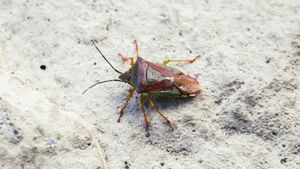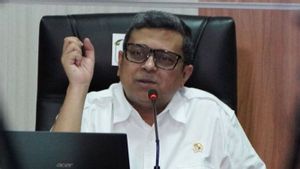Central Bangka Regent, Bangka Belitung Islands Province, Algafry Rahman, encourages fishermen to cultivate mangrove crabs with an "crab box apartment" system, as a solution in the face of a famine period.
"We have started to develop this mangrove crab cultivation in the crab box apartment system in the last few years and this is a solution for fishermen during the famine period, where fishermen cannot go to sea due to extreme weather," said Algafry Rahman in Koba, Saturday.
He explained that the cultivation of mangrove crabs from the crab box apartment system is a cultivation of the indoor vertical accultural system that uses recycled water for enlargement and soft shell (soka) crabs.
Crab apartments, said the Regent, can be used for livestock or prolonging the life of crabs for the purposes of restaurants or fatting soft-shell crabs / kepiting (soka) for the purpose of short-term and long-term cultivation.
"This power supply is an effective solution in building the community's economy, especially the empowerment of coastal communities," he said as quoted by ANTARA, Saturday, April 8.
This famine season occurs for six months a year, so that fishermen cannot carry out normal fishing activities.
"With this crab box, it is a solution that we offer and if it harvests, the size of this mangrove crab can increase by 5 to 6 ounces at a price of Rp. 100,000 per kilogram," he said.
Of course, said the regent, mangrove crab cultivation has an economic outlook because the cultivation time does not take long and the price is also quite expensive.
"We will continue to develop this program to help coastal communities and now there are government-based fishermen who have succeeded in cultivating mangrove crabs in West Kurau Village," he said.
The mangrove crab power reservoir, Bujang, admits that it has no difficulty cultivating mangrove crabs because it already knows how to raise crabs in crab boxes.
"There are no obstacles and the death rate of crabs has also decreased, because we already know what the problem is if these crabs die," he said.
He said the market demand for mangrove crabs was quite high, especially restaurant and hospitality entrepreneurs, but he had not been able to fulfill it because of their large demand.
"They need a large amount of 50 kilograms per day, while we can't afford it because our crab box is still minimal," explained Bujang.
The English, Chinese, Japanese, Arabic, and French versions are automatically generated by the AI. So there may still be inaccuracies in translating, please always see Indonesian as our main language. (system supported by DigitalSiber.id)








